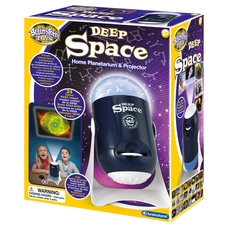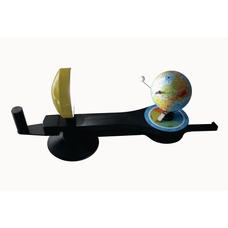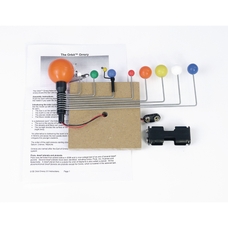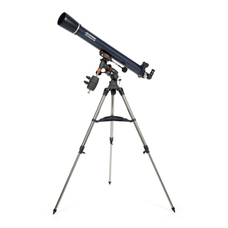cochranes Helios Planetarium
cochranes Helios Planetarium
Product code: HE1006796
Product Description
A working model of the planetary system with a 'Star dome' making it a versatile aid for teaching basic astronomy. The planetarium comprises a circular base on which the model planets revolve around the Sun at their correct relative speeds. The upper edge of the base has a calendar and a degree scale for setting the planetary positions. The star dome is of the northern hemisphere.
- Supplied with teaching manual covering history, the Sun, planets, comets and space exploration as well as useful tips for demonstration.
- Complete with all accessories, and a 240V mains power unit fitted with double insulation and thermal cut-out for overload protection,
- It is supplied with a star dome for the northern hemisphere.
- This orrery is suitable from Key Stage 2 to University levels of education.
The model enables the study of the following topics:
- The Planets in their orbits (length of a year, inferior and superior planets)
- The phases of Venus
- The Moon and its phases (external light source required)
- Eclipse basics
- Time - solar, sidereal and G.M.T.
- The ecliptic and the Zodiacal constellations
- How the planets appear to move against the night sky
- Use of the Helios outside at night - where should the stars appear in the sky?
With the large Earth and Moon accessories that are included, you can also watch as the Earth rotates on its axis while the Moon orbits it every 29.5 'days'. Using an external light source (torch, projector), the larger size of Earth and Moon enables you to demonstrate the following events much more clearly:
- Day and night
- Shadows and the seasons
- The Moon's month, phases and eclipses
- The Pole Star, circumpolar stars and a nocturnal
- The Moon and stars from different positions on Earth
- The tides
- Space travel
- Suitable for demonstration to Key Stage 2 students, and for student use up to University level.
- Key Stage 3 Physics - Matter: Our sun as a star, other stars in our galaxy, other galaxies.
- Key Stage 4 Physics - Space Physics: The main features of the solar system.
- Key Stage 4 Physics - Motion and Forces: Non-contact forces: gravity forces acting at a distance on Earth and in space, forces between magnets, and forces due to static electricity. Relate linear motion to our other relative motions, such as the earth’s relative to the Sun.
Further Information
- Brand
- Cochranes
- Curriculum Link
- Space Physics
- Product Type
- Planetarium
A working model of the planetary system with a 'Star dome' making it a versatile aid for teaching basic astronomy. The planetarium comprises a circular base on which the model planets revolve around the Sun at their correct relative speeds. The upper edge of the base has a calendar and a degree scale for setting the planetary positions. The star dome is of the northern hemisphere.
- Supplied with teaching manual covering history, the Sun, planets, comets and space exploration as well as useful tips for demonstration.
- Complete with all accessories, and a 240V mains power unit fitted with double insulation and thermal cut-out for overload protection,
- It is supplied with a star dome for the northern hemisphere.
- This orrery is suitable from Key Stage 2 to University levels of education.
The model enables the study of the following topics:
- The Planets in their orbits (length of a year, inferior and superior planets)
- The phases of Venus
- The Moon and its phases (external light source required)
- Eclipse basics
- Time - solar, sidereal and G.M.T.
- The ecliptic and the Zodiacal constellations
- How the planets appear to move against the night sky
- Use of the Helios outside at night - where should the stars appear in the sky?
With the large Earth and Moon accessories that are included, you can also watch as the Earth rotates on its axis while the Moon orbits it every 29.5 'days'. Using an external light source (torch, projector), the larger size of Earth and Moon enables you to demonstrate the following events much more clearly:
- Day and night
- Shadows and the seasons
- The Moon's month, phases and eclipses
- The Pole Star, circumpolar stars and a nocturnal
- The Moon and stars from different positions on Earth
- The tides
- Space travel
- Suitable for demonstration to Key Stage 2 students, and for student use up to University level.
- Key Stage 3 Physics - Matter: Our sun as a star, other stars in our galaxy, other galaxies.
- Key Stage 4 Physics - Space Physics: The main features of the solar system.
- Key Stage 4 Physics - Motion and Forces: Non-contact forces: gravity forces acting at a distance on Earth and in space, forces between magnets, and forces due to static electricity. Relate linear motion to our other relative motions, such as the earth’s relative to the Sun.
Further Information
- Brand
- Cochranes
- Curriculum Link
- Space Physics
- Product Type
- Planetarium





